I came across that restoration. He was fortunate enough to have the bench that it's mounted to for the motor. I really don't want to cut up the headstock that I have, but if I could find a headstock where the belt goes out the back, then that might work.
-
Welcome back Guest! Did you know you can mentor other members here at H-M? If not, please check out our Relaunch of Hobby Machinist Mentoring Program!
You are using an out of date browser. It may not display this or other websites correctly.
You should upgrade or use an alternative browser.
You should upgrade or use an alternative browser.
Saving a Logan 825
- Thread starter bhusted
- Start date
A couple of questions for you all.
- What is the spindle taper supposed to be for this lathe? According to the table I found here, it should be a #3 morse taper. I tried a MT3 drill in the spindle while cleaning it up and the hole in the spindle seems too large. The hole at the very end of the spindle is 1.005". I don't have a MT4 arbor to test. The spindle threads are 1-1/2-8.
- Does anyone have have some of the bolts that hold the compound on the saddle that they would mind measuring for me? The ones in mine are abominations that someone created from hex bolts on a bench grinder. After being stuck at home all week on the computer "working from home" I need to get out into the shop and do some turning therapy. From the parts manual I have, it looks like they are 5/16-18 thread but I don't have any other dimensions. Anything you can provide would be helpful.
The 825 doesn’t have a 4mt taper in the spindle. It might be a proprietary taper, as some Logan’s do have. Try the Logan site and ask Scott Logan, make sure you provide the serial number; http://www.lathe.com/contact_us.htm
Thanks for the info about contacting Logan. I've reached out to them, but I don't know about the serial number. According to his website, the SN should be located "stamped on top of the bed, right hand end, between the front V and flat ways." I see nothing in that area on the bed of my lathe. The only markings I could find on the bed are below. The first is underneath where the headstock mounts. The second is at the tailstock end at the back.
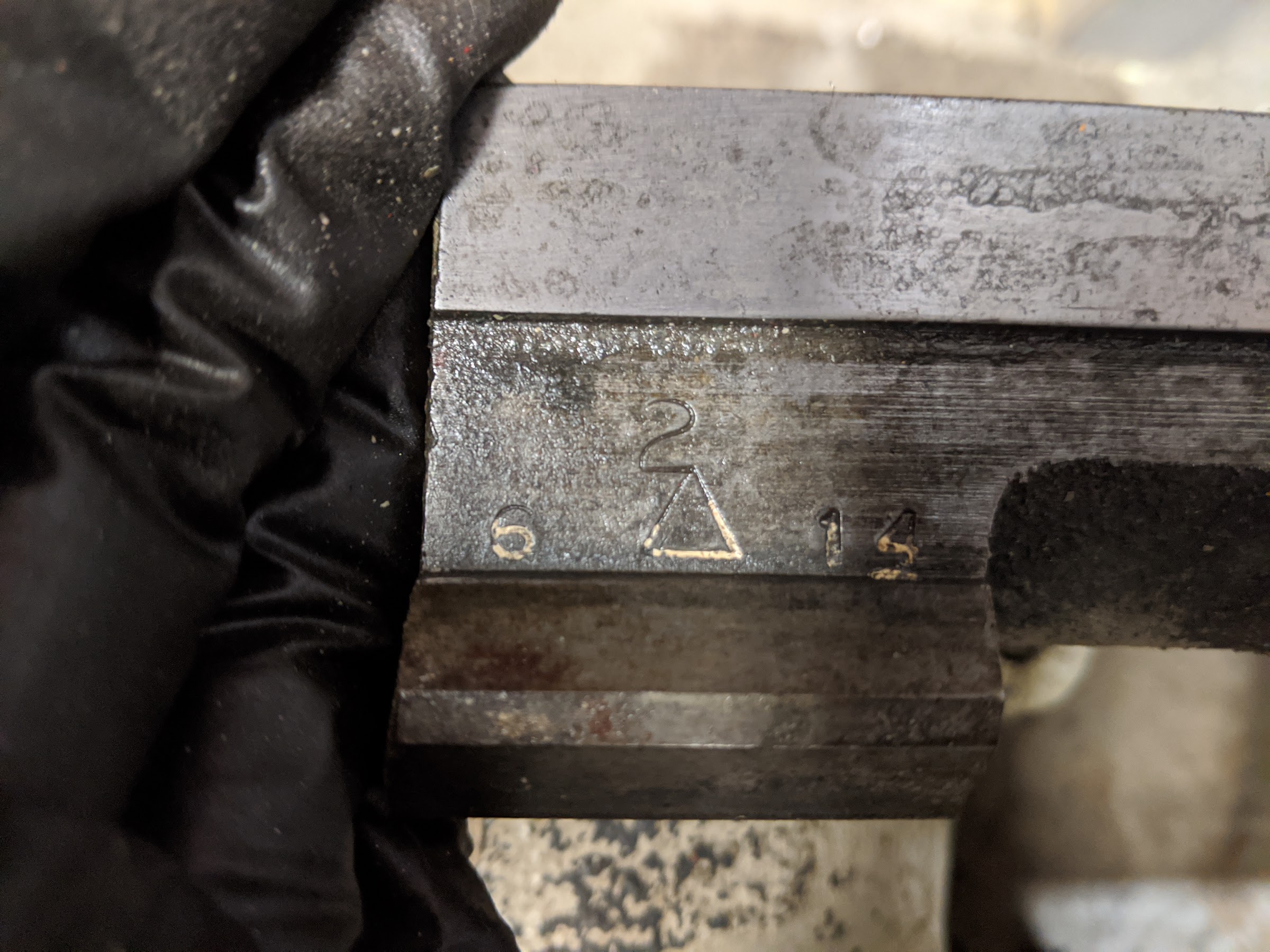
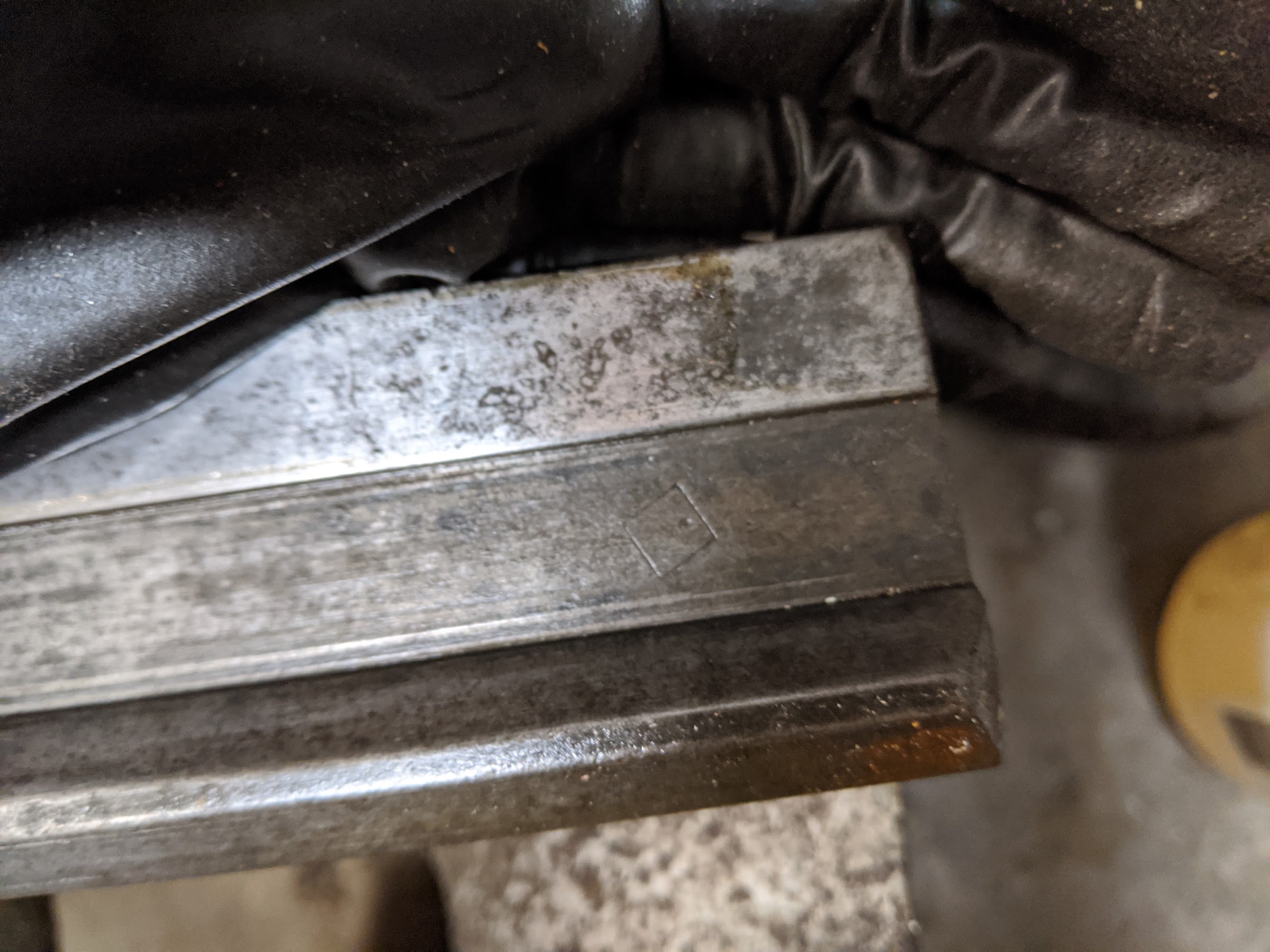
In the midst of other cleaning I decided to make some new bolts for the compound. I don't really know what the originals are supposed to look like, but they work better than the abominations someone hacked up on the bench grinder. These are 5/16-24, where I think the originals were 5/16-18. They were made from 3/4" CRS. I should probably remake them from some tool steel so that I can harden them at some point if I get everything else working.
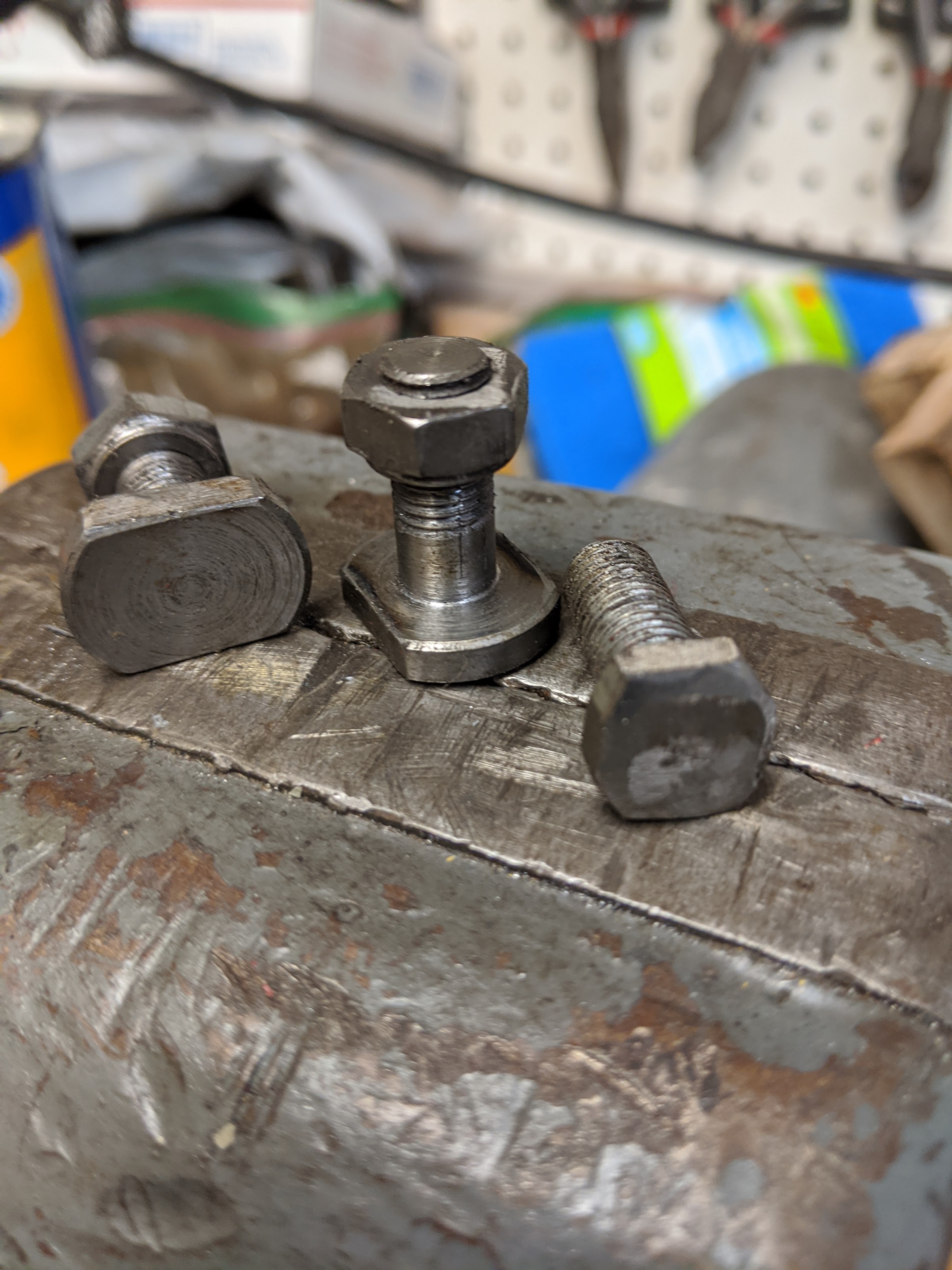
In the midst of other cleaning I decided to make some new bolts for the compound. I don't really know what the originals are supposed to look like, but they work better than the abominations someone hacked up on the bench grinder. These are 5/16-24, where I think the originals were 5/16-18. They were made from 3/4" CRS. I should probably remake them from some tool steel so that I can harden them at some point if I get everything else working.
- Joined
- Oct 18, 2016
- Messages
- 2,872
It's very strange that you lathe lacks a serial number: I've never heard anyone else on the forum report that. I would send
your pictures to Scott Logan and see what he thinks. The area in the lower photo with the square in it is where the s/n is usually found.
Your bolts look just fine and are similar to the stock parts. I would post a picture of mine if I didn't have a setup
that can't be broken down right now.
your pictures to Scott Logan and see what he thinks. The area in the lower photo with the square in it is where the s/n is usually found.
Your bolts look just fine and are similar to the stock parts. I would post a picture of mine if I didn't have a setup
that can't be broken down right now.
I've sent an email off to Scott with the information I've got and hopefully he can tell me more. I did some additional cleaning on the bed before sending the message to him and found this in the location he says the SN should be.
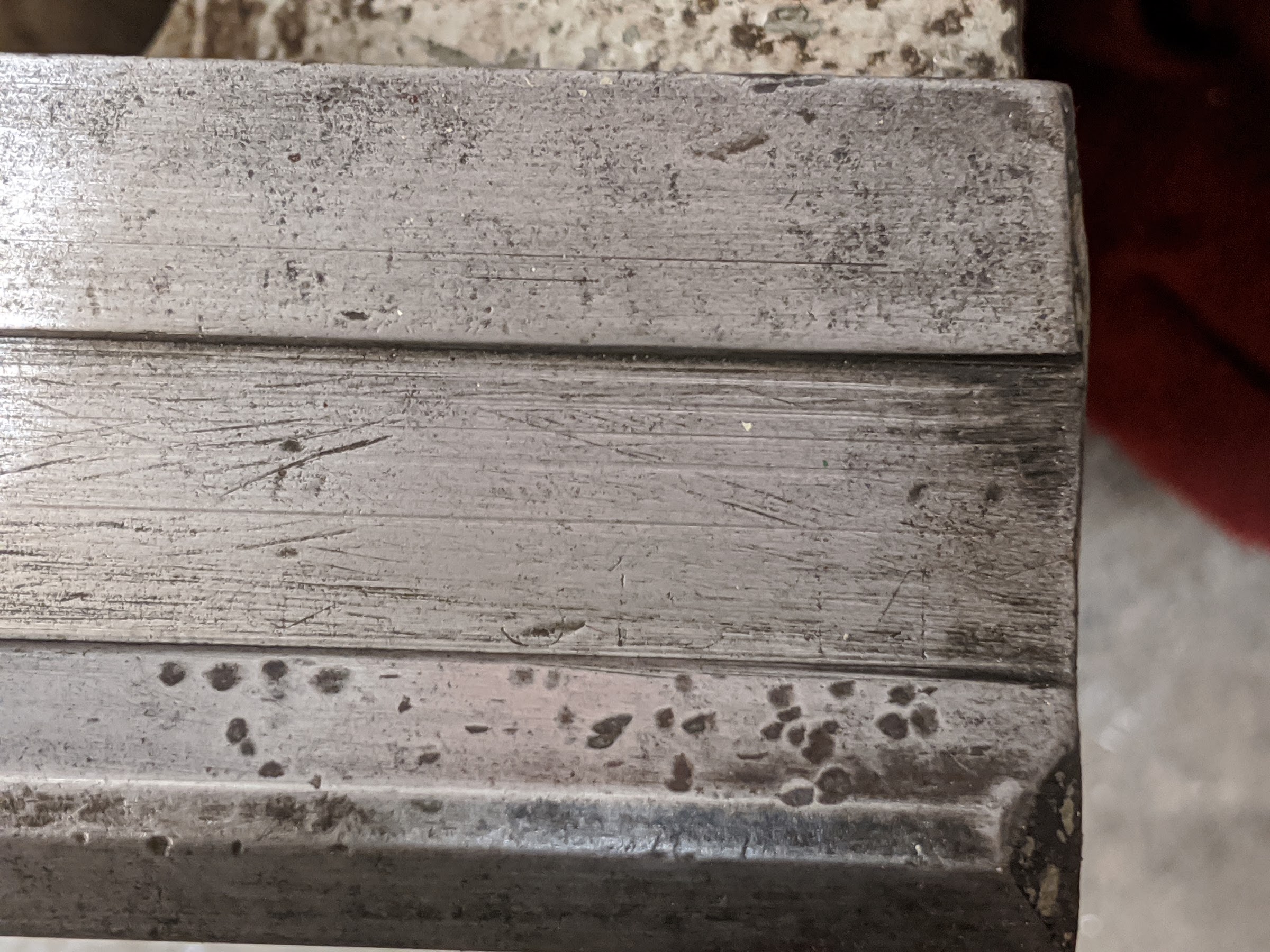
It could be just me, but I think some of those scratches look like numbers. It's strange that there could be this much wear in a non-bearing surface of the bed to wipe out the SN if that is in fact what those are. You can also see what a sad state some of the bed is in.
While I was searching for information on the bed, I also did some more cleaning of the red paint the previous butcher put on. I can't really figure out the plan if there was one from the previous owner. Some parts like the bed and headstock have layers and layers of paint just slathered on all over the place. This has obviously accumulated over many many years. The tailstock and carriage are another matter. The only paint on them is the red spray paint, so someone took the time to strip off the other layers of paint including the original gray, but didn't bother to de-grease or mask off anything before hitting it with the rattle can. They also chose to paint machined surfaces that obviously should not be painted. As a result, some of the red comes off just by looking at it and other parts required a razor blade and gray scotchbrite to clean off. The bearing surfaces of the tailstock are a perfect example.
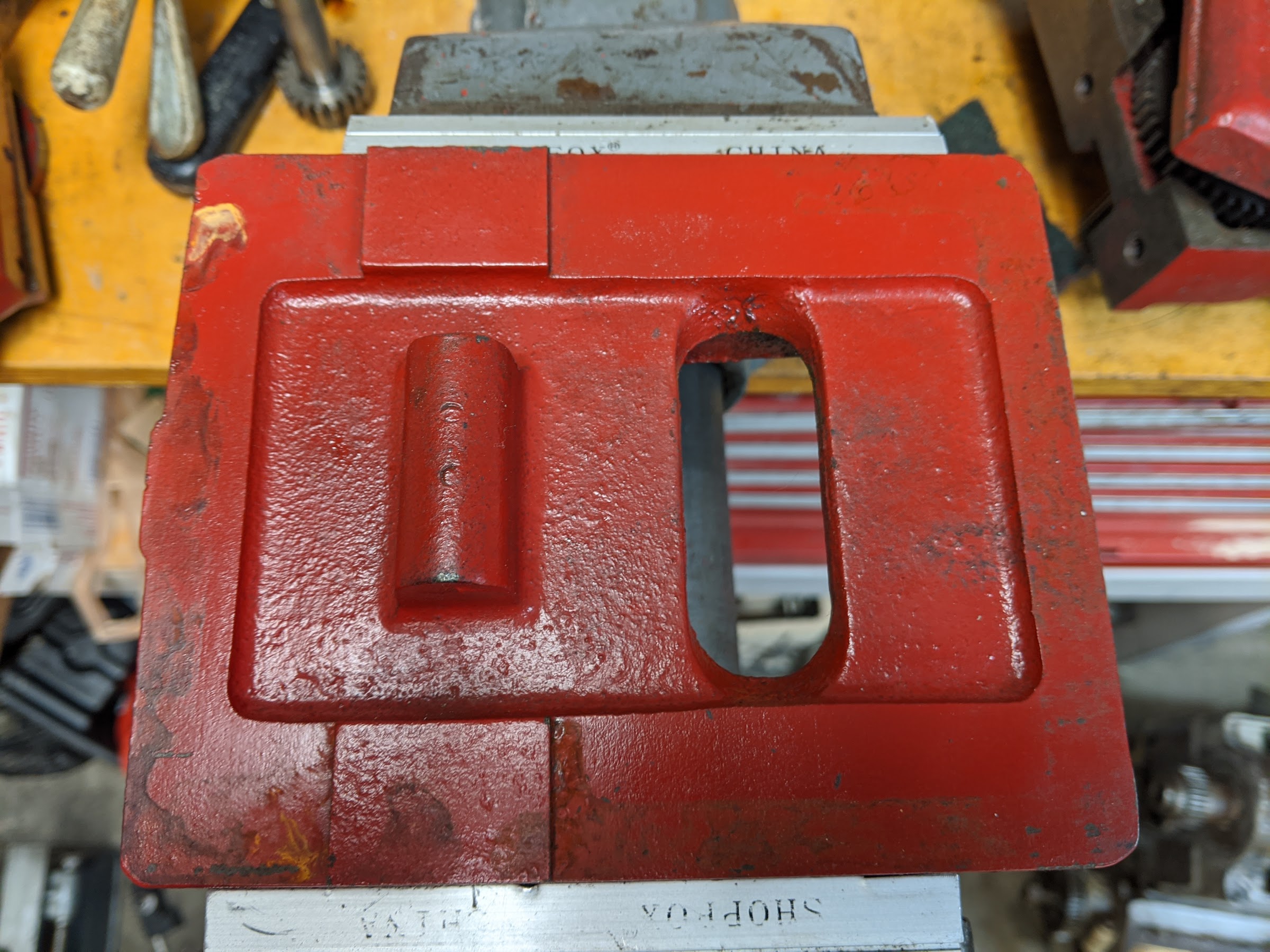
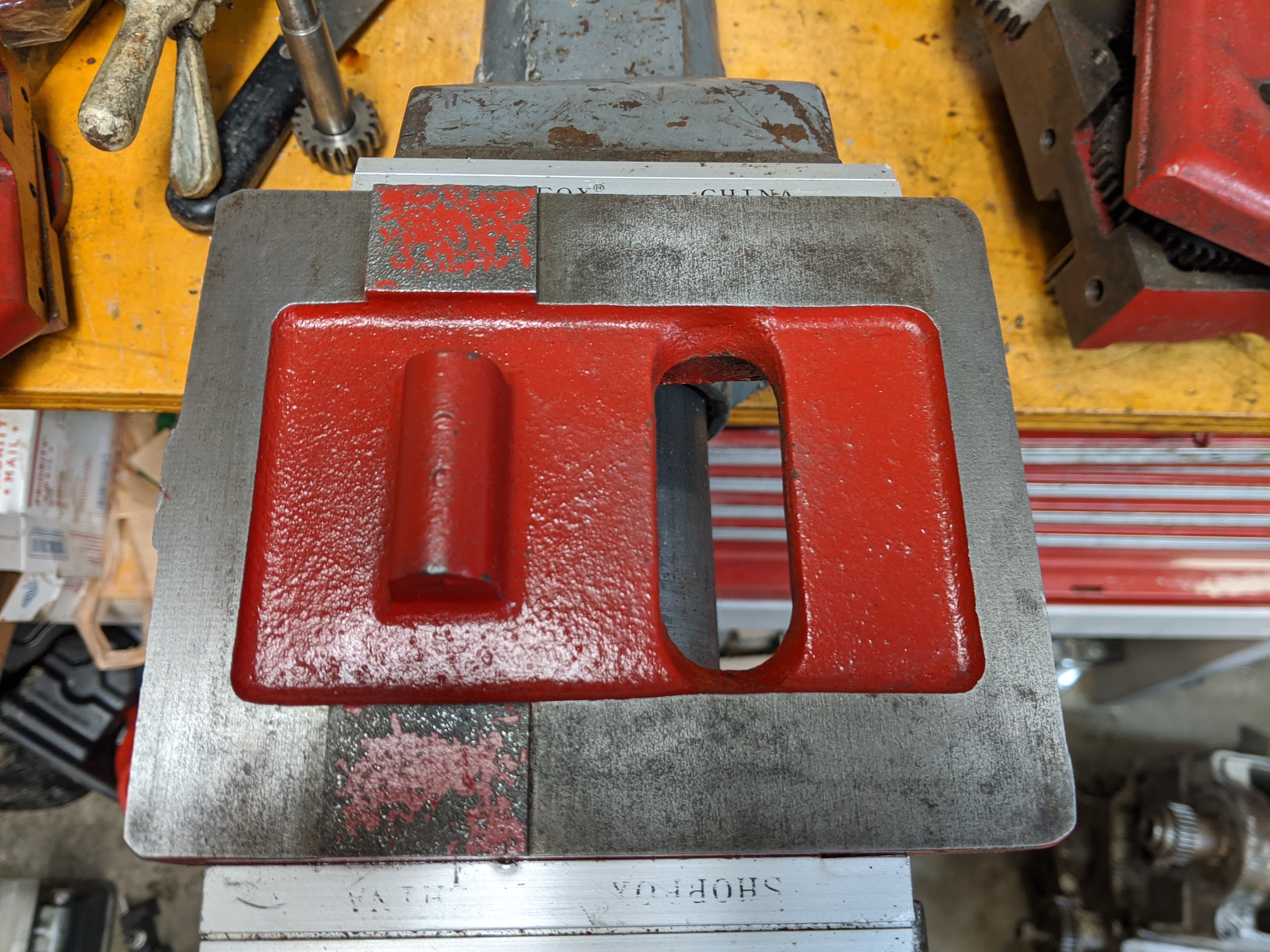
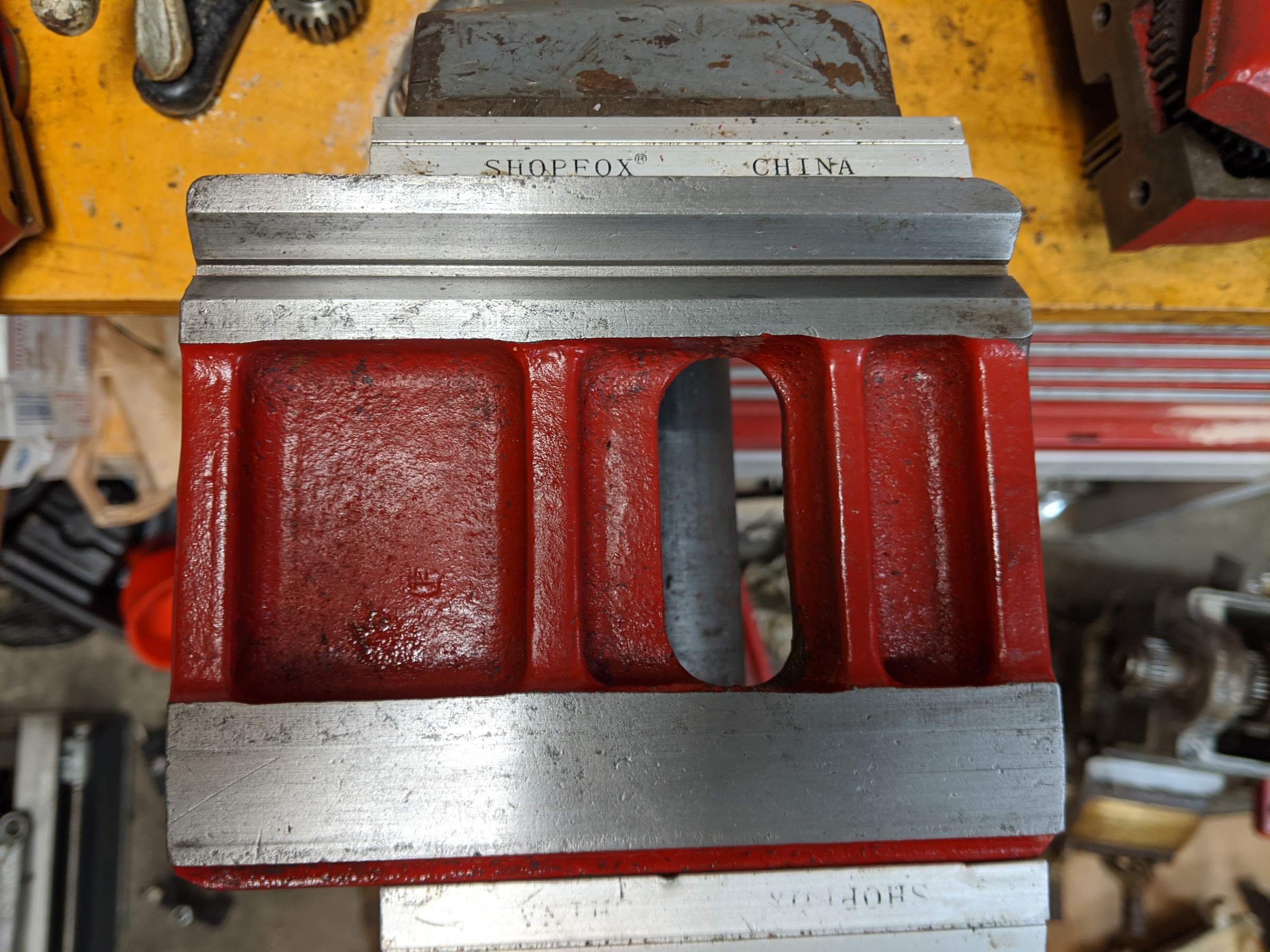
The debate now is if I paint all of these parts before putting it back together since I've broken them down to inspect and clean, or assemble everything to verify the function of the lathe before taking the time to properly paint everything. In the meantime, I've got a lot more red paint to clean off.
It could be just me, but I think some of those scratches look like numbers. It's strange that there could be this much wear in a non-bearing surface of the bed to wipe out the SN if that is in fact what those are. You can also see what a sad state some of the bed is in.
While I was searching for information on the bed, I also did some more cleaning of the red paint the previous butcher put on. I can't really figure out the plan if there was one from the previous owner. Some parts like the bed and headstock have layers and layers of paint just slathered on all over the place. This has obviously accumulated over many many years. The tailstock and carriage are another matter. The only paint on them is the red spray paint, so someone took the time to strip off the other layers of paint including the original gray, but didn't bother to de-grease or mask off anything before hitting it with the rattle can. They also chose to paint machined surfaces that obviously should not be painted. As a result, some of the red comes off just by looking at it and other parts required a razor blade and gray scotchbrite to clean off. The bearing surfaces of the tailstock are a perfect example.
The debate now is if I paint all of these parts before putting it back together since I've broken them down to inspect and clean, or assemble everything to verify the function of the lathe before taking the time to properly paint everything. In the meantime, I've got a lot more red paint to clean off.
- Joined
- Sep 5, 2013
- Messages
- 3,206
I agree, there are traces of what may have been the serial number there. I make the last digit at "4", the second to last maybe also "4", then unknown followed by what appears to me a "1" and "5" maybe?It could be just me, but I think some of those scratches look like numbers
Have you tried using raking light -- there may be enough left to get a better confirmation. Raking light is simply a focused light source ( I prefer a Maglight and not an LED ) held at a very shallow angle to the surface. The light beam rakes across the high spots and shows the lows as shadow, and can be quite effective. Dim ambient lighting helps. Might also try a pencil rubbing through tissue paper and see if that brings something up.
-frank
- Joined
- Oct 18, 2016
- Messages
- 2,872
I've sent an email off to Scott with the information I've got and hopefully he can tell me more. I did some additional cleaning on the bed before sending the message to him and found this in the location he says the SN should be.
It could be just me, but I think some of those scratches look like numbers. It's strange that there could be this much wear in a non-bearing surface of the bed to wipe out the SN if that is in fact what those are. You can also see what a sad state some of the bed is in.
While I was searching for information on the bed, I also did some more cleaning of the red paint the previous butcher put on. I can't really figure out the plan if there was one from the previous owner. Some parts like the bed and headstock have layers and layers of paint just slathered on all over the place. This has obviously accumulated over many many years. The tailstock and carriage are another matter. The only paint on them is the red spray paint, so someone took the time to strip off the other layers of paint including the original gray, but didn't bother to de-grease or mask off anything before hitting it with the rattle can. They also chose to paint machined surfaces that obviously should not be painted. As a result, some of the red comes off just by looking at it and other parts required a razor blade and gray scotchbrite to clean off. The bearing surfaces of the tailstock are a perfect example.
The debate now is if I paint all of these parts before putting it back together since I've broken them down to inspect and clean, or assemble everything to verify the function of the lathe before taking the time to properly paint everything. In the meantime, I've got a lot more red paint to clean off.
I would try to assess the condition of the lathe first and come up with a list of what's needed to make it a working lathe, as well as a cost estimate. While you have very little money in the lathe so far, costs can add up very quickly. (Ask me how I know this...)
One thing to look at is the condition of the spindle bearings. The bearing at the chuck end can't be found at your local
bearing supply house, and when I bought one a few years ago it was a bit over 200 bucks. Logan sells them. The small one is standard and not expensive.

